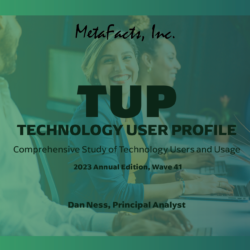Background:
A hotly contested group of consumers and employees includes those switching between using iPhones and Android smartphones. Attitudes about and experiences with AI will likely influence consumer’s choices of ecosystems. Apple recently announced Apple Intelligence, its own adaptation of user-facing AI, beyond the machine learning horsepower in its devices. Google has increasingly developed AI tools, with some being consumer-facing and others further back in the stack.
Approach:
MetaFacts surveyed 12,032 online adults in the US, Germany, UK, and Japan as part of its annual TUP/Technology User Profile 2024 study. Within the survey, along with detailing the smartphones they use, we have them report their purchase plans for the coming 12 months. We also assess their attitudes about AI’s ability to help them be more creative, productive, or to learn new things along with many other positive and negative attitudes about AI.
We analyzed the iPhone/Android switcher market by dividing the market into 16 segments based on their current use of an iPhone or Android smartphone and their intention to acquire an iPhone or Android or not refresh their device.

